Mastering the DAO: How Decentralized Organizations Work and Govern
What is a DAO? The Organization That Code Built
A complete guide to understanding Decentralized Autonomous Organizations — how they work, why they matter, and how you can participate in the Web3 revolution.
The Grand Re-Architecture of Trust
You’ve seen the headlines: a Decentralized Autonomous Organization (DAO) attempting to buy historical artifacts or managing millions in crypto assets. You’ve read about DAOs funding infrastructure and governing DeFi protocols. This isn’t hype — it’s a structural revolution in how people organize, make decisions, and manage capital on the blockchain.
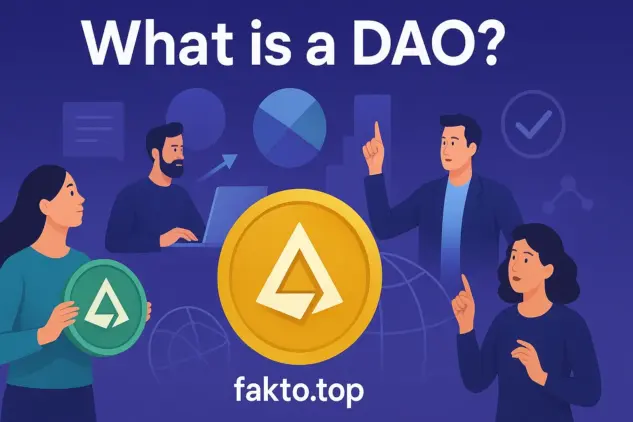
In the traditional world, authority and power are centralized — governments, boards, or corporate executives hold control. A DAO flips this model entirely. It’s an organization where the rules of operation are written in open-source code, executed automatically by smart contracts, and enforced by the blockchain. There is no CEO or boardroom — only a network of governance token holders who collectively decide the future.
This evolution transforms you from a passive participant into an active digital owner. The code replaces the legal department, the public ledger replaces the accountant, and community consensus replaces hierarchy. If you want to understand the future of Web3 governance, you must first master the mechanics of a DAO — the backbone of decentralized collaboration.
DAO vs. Traditional Organizations — A Shift in Trust
The key innovation of a DAO lies in its trust architecture. Traditional organizations depend on human intermediaries — directors, auditors, and regulators. DAOs replace this with code, cryptography, and open governance. This trustless design is what makes global coordination possible, even among pseudonymous members.
| Feature | Traditional Organization | Decentralized Autonomous Organization (DAO) |
|---|---|---|
| Control | Centralized — executives and legal entities make decisions. | Decentralized — governed by token holders through transparent voting. |
| Transparency | Limited — internal reports and private data rooms. | Full — all transactions and proposals are on-chain and public. |
| Execution | Manual — depends on human enforcement. | Automated — executed by smart contracts. |
| Trust Model | Based on reputation and law. | Based on code and cryptographic consensus. |
Part I: Unpacking the Genesis Block — What Defines a DAO?
The Iron Triangle of Decentralized Power
Every successful DAO operates within a balance of three essential forces that together ensure stability and fairness in decentralized governance:
1. Decentralization: There is no single point of failure or control. Decisions are made collectively by a distributed network of token holders, ensuring resilience against censorship or corruption.
2. Autonomy: A DAO is self-governing and self-executing. Once a proposal passes the required voting threshold, smart contracts automatically carry out the decision without human intervention or delay.
3. Organization: Beyond code, a DAO has a shared mission, active community, and a verifiable on-chain Treasury that stores and allocates collective funds transparently.
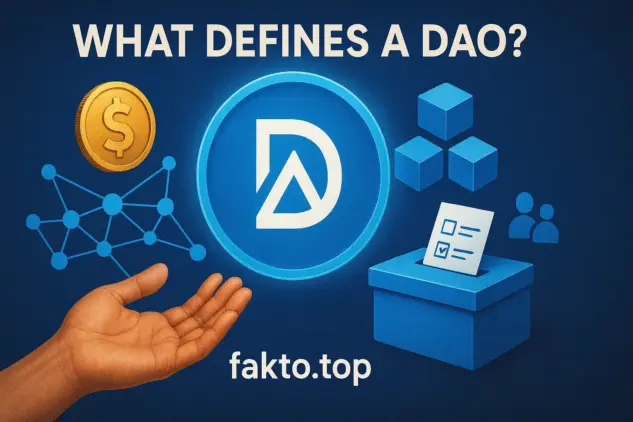
Inviolable Rule: Code is Law
The foundational principle of a DAO is that “code is law.” Unlike corporate charters interpreted by courts, DAO governance is encoded directly into smart contracts. Voting rules, quorum thresholds, and execution parameters are all predefined in code — leaving no room for manipulation, hidden clauses, or executive override.
This model guarantees that outcomes are transparent, final, and trustless. Participants do not need to rely on personal relationships or legal systems — they rely on mathematics, consensus, and blockchain immutability.
Thanks to this, global collectives of anonymous participants can securely coordinate and manage millions — even billions — of dollars, all without ever meeting in person. This is the essence of the DAO revolution: transparent, programmable governance for the digital age.
Part II: Inside the Control Room — How a DAO Operates in Detail
How Does a DAO Actually Work?
Let’s break it down. At its core, a DAO (Decentralized Autonomous Organization) is a group of people who decide things together online — but instead of emails and paperwork, they use blockchain and smart contracts. These contracts are bits of code that automatically do what the group agrees on.
Imagine you and a few thousand others have a shared digital wallet with crypto inside. You all hold DAO tokens — and each token gives you the right to vote on what happens next. Want to fund a new project? You make a proposal, everyone votes, and if enough people agree, the smart contract releases the funds automatically. No waiting, no approvals, no middlemen.
DAO Governance — The Heart of the System
Every DAO governance model revolves around the same question: how do we make decisions fairly when no one is in charge? Different DAOs use different rules, but the basics are similar:
- Proposal: Any member (or certain members) can suggest a new idea or project.
- Discussion: The community debates the idea in forums or chats. Transparency is key — everything is public.
- Voting: Token holders vote yes or no using their DAO tokens. More tokens often mean a stronger vote.
- Execution: If the vote passes, a smart contract automatically carries out the decision.
This voting system is what keeps DAOs fair and transparent. But it also brings challenges: power can still concentrate if a few members hold most tokens, and not everyone always participates. That’s why many DAOs experiment with new voting systems to balance influence. 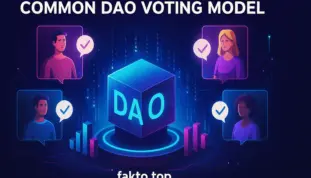
Common DAO Voting Models
To solve the fairness issue, the community keeps inventing creative ways to vote. Here’s a quick comparison of the most popular models:
| Voting Model | How It Works | Best For | Downsides |
|---|---|---|---|
| Token-Weighted Voting | Each token = one vote. The more tokens you hold, the more power you have. | Simple DAOs, early-stage projects. | Risk of whales dominating decisions. |
| Quadratic Voting | Each extra vote costs more tokens. It reduces the power of big holders. | Community-focused DAOs. | More complex to implement and explain. |
| Delegated Voting | Members can delegate their votes to trusted representatives. | Large DAOs with passive members. | Can create small groups of “super voters.” |
| Reputation-Based Voting | Voting power depends on a member’s contribution, not token count. | Collaborative or mission-driven DAOs. | Harder to measure contributions objectively. |
Who Can Join a DAO — and Why Would You?
One of the biggest strengths of a DAO is its openness. Anyone with an internet connection can join, buy governance tokens, and start participating. You don’t need permission, titles, or even your real name — just your wallet address.
Why do people join DAOs? There are three main reasons:
- Ownership: You get a real say in decisions — unlike traditional companies where shareholders often have no voice.
- Transparency: Everything is on-chain. You can see where the money goes, what’s voted on, and who supports what.
- Community: DAOs attract like-minded people — developers, investors, artists, builders — who want to build something together.
How to Start a DAO (In Simple Steps)
Starting your own DAO might sound complicated, but today there are ready-made tools that make it surprisingly simple. Here’s a step-by-step overview:
- Define your mission: What’s your DAO about? Funding projects, managing a community, investing, or building something new?
- Choose a platform: Tools like Aragon, DAOstack, and Snapshot let you launch a DAO without deep coding skills.
- Create a token: This represents voting power and ownership.
- Set up governance rules: Decide how proposals and voting will work — and what quorum is needed to pass decisions.
- Launch and invite members: Once the DAO is live, spread the word. The more active participants you have, the stronger your DAO becomes.
That’s the beauty of it — a DAO can start as a small experiment and grow into a full-scale decentralized ecosystem managing millions in assets. The key is simple: clear purpose, transparent rules, and active participation.
Part III: The Analytical Edge — DAO vs. The Old World and Inherent Risks
Why DAOs Feel Like a Mind-Bender
Let’s be honest — when you first hear about a DAO, it can feel like sci-fi. Millions of dollars moving around, decisions made by code, and no boss telling you what to do? Skeptics will say it’s chaos waiting to happen. And yes, if you dive in blindly, it can be messy. But that’s the thrill: the rules are baked into math and logic, not office politics.
Think of it like this: traditional organizations are like old steam engines — they get the job done, but they’re clunky, slow, and a bit smoky. A DAO is more like a swarm of drones: coordinated, fast, and every drone knows the rules without someone shouting commands. It’s elegant, efficient, and yes, sometimes unpredictable.
The Coordination Puzzle: DAO vs. Traditional Hierarchy
In a regular company, coordination relies on memos, meetings, and managers breathing down your neck. In a DAO? Coordination happens through incentives and code. You don’t need to like someone to trust the system — the blockchain handles it. But here’s the catch: trust the code, not the people. That’s a shift for anyone used to handshakes and office chairs.
| Feature | Traditional Organization | DAO |
|---|---|---|
| Decision Power | Centralized — executives call the shots. | Decentralized — the rules are enforced automatically by smart contracts. |
| Transparency | Opaque — you rarely know what’s really happening behind the boardroom doors. | Crystal clear — all transactions and votes are on-chain and public. |
| Speed | Slow — approvals, legal checks, bureaucratic drag. | Fast — proposals pass and execute automatically once quorum is reached. |
| Risk Profile | Prone to human error and corruption. | Prone to code bugs and voter apathy, but radically transparent. |
Where the Danger Lurks
Don’t get me wrong — DAOs are not magic. They are powerful but fragile if handled poorly. Here’s where you need to raise an eyebrow:
- Smart Contract Risk: A tiny bug can drain millions in seconds. It’s like leaving the keys to a spaceship in a toddler’s hands. Audits are not optional.
- Voter Apathy: If only 5% of token holders vote, the loudest few dictate the future. Democracy works better with participation, and DAOs are no exception.
- Regulatory Uncertainty: DAOs live in a grey zone of law. Members could theoretically face liability — not fun if the authorities decide to intervene.
- Information Asymmetry: Some proposals are highly technical. Most people will rely on a handful of “experts.” That creates a subtle risk of manipulation.
Why You Still Want In
Despite the risks, DAOs are seductive. They offer real ownership, transparency, and the ability to participate in something bigger than yourself. If you like the idea of being part of a digital collective where the rules are fair and visible to all, this is the playground for you. Skepticism is healthy — it keeps you sharp — but don’t let it stop you from exploring.
Quick Tips for Navigating DAO Risks
- Read the Code: Even a basic glance at the governance smart contracts helps you understand potential pitfalls.
- Check the Community: Healthy discussions in forums indicate active participation and better oversight.
- Start Small: Don’t throw your life savings into your first DAO. Experiment, learn, and scale gradually.
- Diversify Participation: Join more than one DAO to see different models and approaches.
Part IV: The Governance Playbook — Deep Dive Q&A
Welcome to the cockpit. Here’s where we peek under the hood of DAOs and answer the burning questions nobody explained to you in plain English. Think of this as your DAO cheat sheet — slightly sarcastic, mostly honest, and full of “aha!” moments.
How Do You Start a DAO — Step by Step?
Ah, the million-dollar question. Here’s the blueprint without the legalese or buzzwords:
- Define your mission: Seriously, what do you even want to build? Funding projects? Collecting digital art? Governing a DeFi protocol? If you can’t answer this in one sentence, pause.
- Pick your toolkit: Tools like Aragon and Snapshot exist so you don’t need to be a blockchain wizard. They’re like LEGO for DAOs — snap the pieces together and voilà.
- Create the token: This is your DAO’s lifeblood. Tokens = votes. No tokens = no voice. Simple math, brutal logic.
- Write the rules: Proposals, voting thresholds, quorum — get it on-chain, so there’s no room for office politics or sneaky loopholes.
- Launch and gather the tribe: Invite early members, share your vision, test small proposals. Think of it as planting seeds and watching a digital forest grow.
How Do DAOs Like Uniswap Actually Work?
Picture a digital city council where everyone votes through a secure, public ledger. Sounds neat, right? In reality, a Uniswap-style DAO looks like this:
- A core developer drops an idea.
- The community debates it fiercely — sometimes like a political debate, sometimes like a Reddit flame war.
- Most token holders don’t vote directly. They delegate their vote to trusted players — the “wise owls” of the DAO world.
- If enough weighty votes agree, the smart contract fires off the change. Bam — new protocol deployed, no manager required.
It’s part strategy, part chaos, part magic. And yes — it works, sometimes better than any boardroom ever could.
What Are the Most Popular DAO Governance Models?
Governance isn’t one-size-fits-all. Here’s the menu:
- Direct Token Voting: One token = one vote. Fast, simple, but whales may dominate.
- Delegated Voting: Trust your votes to experts. Efficient, but beware of tiny elite groups gaining too much sway.
- Vote-Escrow (ve-Tokens): Lock your tokens for long-term power. Encourages commitment, punishes flakiness.
- Quadratic Voting: Your influence = square root of your tokens. Mid-size holders suddenly get a voice. Brain-twisty, but fairer.
Where DAOs Trip Over Themselves
Full transparency is bliss — until someone exploits it. Here’s where newbies, skeptics, and thrill-seekers should raise an eyebrow:
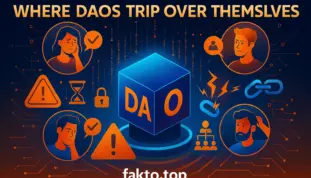
- Smart Contract Bugs: One line of code can ruin everything. Audits aren’t just nice, they’re survival.
- Voter Apathy: Low turnout = a few loud voices run the show. Democracy 101, even online.
- Complexity: Some proposals require PhD-level brainpower. Most people trust experts — a tiny vector for manipulation.
- Regulatory Unknowns: Law may or may not care about your digital collective. Play nice, or risk a knock on your digital door.
Quick Survival Tips for DAO Explorers
- Start Small: Don’t throw your life savings into a DAO just because it sounds cool.
- Observe First: Watch how the community debates and votes before jumping in.
- Read the Code: Even a light skim reveals hidden traps or sloppy logic.
- Diversify Your Attention: Join a few DAOs, compare strategies, learn the ecosystem before committing big resources.
Part V: The Unfolding Horizon — The Future of DAOs
The DAO Crystal Ball: What Lies Ahead?
Here’s the thing — predicting the future of DAOs is like staring into a slightly foggy crystal ball. We can see shapes, hints of what might come, but it’s never crystal-clear. One thing is certain: DAOs are not a passing trend. They are evolving faster than anyone expected, and the possibilities are, frankly, exhilarating.
Will DAOs start buying real estate, managing museums, or even running digital cities? Some already are. Real-World Asset (RWA) DAOs are popping up, experimenting with governance of tangible goods — land, property, even rare artifacts. It’s part fantasy, part reality, and part “wait, did that really just happen?”
The Sub-DAO Universe — Mini-DAOs Within DAOs
Imagine a giant tree with countless branches. Each branch has its own leaves, its own ecosystem — yet all feed from the same root. That’s the Sub-DAO concept. Big DAOs spawn smaller, specialized DAOs to manage day-to-day operations or niche projects, while still reporting to the main DAO. It’s a fractal of governance — complex, layered, and surprisingly efficient.
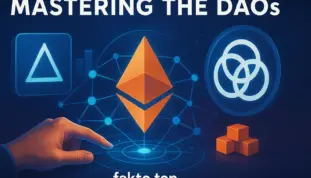
For example, a main protocol DAO could vote on major funding decisions, but a dedicated Grants Sub-DAO reviews small applications from developers. It’s a decentralized delegation of responsibility — letting creativity and execution flourish without clogging the main pipeline.
Questions That Keep Us Up at Night
Let’s get speculative — because the future of DAOs invites more questions than answers. Ready?
- Could a DAO ever replace traditional governments? Maybe someday, in micro-scale communities or digital nations. The idea isn’t crazy — just radical.
- What happens if a DAO gets hacked? That’s the dark side — but also why security, audits, and vigilant communities are non-negotiable.
- Can DAOs evolve consciousness? Okay, maybe not *sentient*, but could they develop self-optimizing, learning governance structures that surprise even their creators? Some experiments suggest yes.
- Will people actually trust DAOs over people? That’s the ultimate philosophical question. Trusting code over flesh and blood is a leap — but one that may define the next era of collaboration.
Why You Should Care (Even If You’re Skeptical)
Here’s the paradox: you might be skeptical, doubtful, or thinking “this is all too wild” — and that’s healthy. But DAOs are a rare playground where **ownership, transparency, and collective action** coexist in a way that was impossible before. They let individuals touch the levers of massive systems without needing a corner office or a law degree.
While fundamental principles define the basic DAO structure, success in the real world demands constant innovation and adaptation. No entity demonstrates this need for evolution better than one of the sector’s earliest and largest players. For a deep dive into how a major protocol navigates complex governance, regulatory pressures, and market shifts, examine the internal strategy of The DeFi Institution, a critical case study in sustained decentralization.
Imagine a world where rules are clear, funds are visible, and participation is open. That world is being built today — and the missing piece is you. Curious? Brave? Slightly audacious? Good. That’s the exact mindset that DAOs reward.
Parting Thoughts
The DAO is not just code — it’s an experiment in human trust, organization, and imagination. It challenges old hierarchies, invites skepticism, and demands participation. Some will fail spectacularly, others will thrive brilliantly. But one thing is certain: the horizon is wide, the rules are clear, and your vote — yes, your vote — can matter.
Step in, explore, question, and contribute. The DAO frontier is real, the stakes are tangible, and the future? Well… it’s being written in code, one vote at a time.
While understanding the core mechanics of a DAO is fundamental, practical governance often reveals significant flaws, such as low voter turnout and the outsized influence of ‘whales’. These challenges have led to the exploration of advanced governance solutions. We explore one of the most promising alternatives—a flexible system designed to increase member engagement and fairness—in our comprehensive analysis of The Liquid Senate Model: Solving DAO Apathy & Whale Voting Failure, which directly tackles the twin issues of apathy and centralized control.
Disclaimer
This article is for educational and informational purposes only. It does not constitute financial, legal, or investment advice. Participating in DAOs carries risks — including loss of funds, code vulnerabilities, and regulatory uncertainty. Always do your own research and consult professionals before making decisions.
